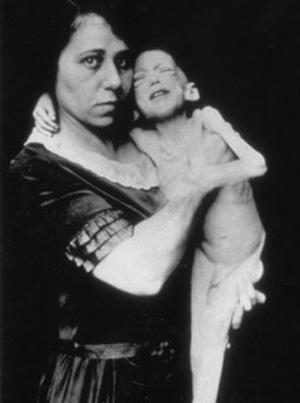23 Jan 2018 - {{hitsCtrl.values.hits}}

 As we advance into a future with technology and enhance knowledge about ourselves and the world around us, it’s hard to imagine that there was a time that our understanding of the world was so much less than today, just a few decades ago. If we were to trace back the steps into history, we would realize that we have reached where we are today, through the contributions of thousands of people, their innovative ideas which led to new discoveries and inventions.
As we advance into a future with technology and enhance knowledge about ourselves and the world around us, it’s hard to imagine that there was a time that our understanding of the world was so much less than today, just a few decades ago. If we were to trace back the steps into history, we would realize that we have reached where we are today, through the contributions of thousands of people, their innovative ideas which led to new discoveries and inventions.
 If we observe those pathway more closely, we could fathom that at some points in the past, there were ‘giant leaps’ in terms of discoveries, that changed the course of the world. Take for instance the discovery that the sun didn’t circle around the earth after all, but the earth did. This idea revolutionized people’s thinking, opening up an endless world of opportunities for a number of sciences. This has been the same with medicine. A single discovery, an exact pathway of a certain disease and a medication can change the lives of billions of people who are not even born yet.
If we observe those pathway more closely, we could fathom that at some points in the past, there were ‘giant leaps’ in terms of discoveries, that changed the course of the world. Take for instance the discovery that the sun didn’t circle around the earth after all, but the earth did. This idea revolutionized people’s thinking, opening up an endless world of opportunities for a number of sciences. This has been the same with medicine. A single discovery, an exact pathway of a certain disease and a medication can change the lives of billions of people who are not even born yet.
Death sentence
The discovery of insulin was one such milestone in medicine. Until the early 1900’s people’s knowledge on Diabetes was highly limited. They knew that with regard to this disease the blood sugar levels shot up, sugar passed with urine and this condition soon led to dehydration and inevitably death.
If you had developed Diabetes, there were two courses of actions that you could follow. One is that you could go on a highly restricted diet, as advised by the doctors those days, which eventually led to death by starvation, due to the severity of diet. The second option is that you could choose to ignore the doctor’s advice and soon succumb to death as a result of a coma due to high blood sugar or severe dehydration.
Banting and best
Scientists were suspecting that lack of a substance in a person’s pancreas may contribute to this condition, but numerous attempts to extract this ‘substance’ had failed. It was at a time like this that Dr. Frederick Banting of Canada, together with Chares Best; a medical student, started a series of experiments to extract this substance, with the facilities provided by the physiologist J.J.R Mcleod of the Toronto University. They initially conducted experiments on pancreases extracted from dogs, then moved to pancreas obtained from to calf and bulls.
 Discovery
Discovery
Eventually, they managed to isolate the ‘substance’, and with Macleod’s advice, named it Insulin. Even though it takes only two and three sentences to summarize what they achieved, the result, as in any worthy endeavor, were obtained after many failed experiments, hardships and disagreements. After their experiments with dogs proved a success, they moved on to the harder task of testing insulin on human subjects. For this, they were joined by the biochemist, J.B Collip, who managed to purify their extract of pancreatic substances.
The unthinkable
Today, almost every person knows what Insulin is, and although other new drugs have been invented for Diabetes since then, it’s still the mainstay of treatment for Type 1 Diabetes. Frederick Banting and Charles Best; an average doctor from a poor farming family and a medical student, along with their small team, proved to the world that you can make the ‘unthinkable’ a possibility, if you dedicate yourself to the course. -For their discovery which brought hope to thousands of people, and billions yet to be born, Banting and Macleod went on to receive the Nobel Prize for Physiology in 1923, and the two of them went on to share the prize money with Best and Collip, respectively.
Witnessing the miracle
Finally, a 14-year-old boy who was at the brink of the death managed to be the first human subject to experience and benefit from this new miracle medicine. Many such miracles have followed.
It’s said that during those days, there were wards where small children who were suffering from Type 1 Diabetes and had the complication called diabetic ketoacidosis, were held.
They were just lying there, around fifty small kids, insensible, while the grieving parents sat next to them, awaiting their deaths. Literature explains the dramatic moment where the team visited this ward and went to inject each child with the extracted insulin. While they were injecting the last few children, the first to receive the injection were just waking up, amidst the joyous cries of their loved ones.
People who hadn’t had a proper meal for months and years for the fear of death were able to enjoy meals again.
(The writer is a final year medical student)
26 Apr 2024 57 minute ago
26 Apr 2024 1 hours ago
26 Apr 2024 2 hours ago
26 Apr 2024 3 hours ago
26 Apr 2024 3 hours ago